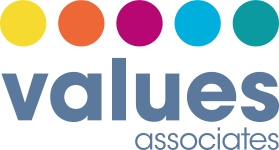
What is risk mapping? What is it for? How are internal audit and risk mapping closely related? Deciphering.
Economic crises, armed conflicts, global epidemics, global warming, political uncertainties, cyber-attacks, corruption…: companies are evolving in an increasingly unstable world. In this context, risk management is becoming increasingly important in organizations. Focusing on risk management means being able to better anticipate risks and build appropriate defense strategies.
Risk mapping is the central tool of risk management. As a transversal project for the company, its elaboration can be entrusted, depending on the context and the organization, to the risk manager, to a member of the risk management committee, to an external consultant… The risk map is also a valuable tool in the internal auditing toolbox.
What is risk mapping?
A visual representation of the risks
Risk mapping is a tool for identifying, evaluating, prioritizing and monitoring risks that are internal to the company (endogenous) and external (exogenous).
A graphic and visual representation, it facilitates the understanding of risks. These are classified according to their criticality. This is assessed according to two factors: the severity of their impact and the probability of their occurrence.
Risk mapping can be global to the whole company or partial. This is the case, for example, with the mapping of risks relating to corruption. Since 2017, it must be implemented by companies with more than 500 employees and their subsidiaries, in compliance with the Sapin 2 law.
To be effective and relevant, mapping must be alive and updated, usually at least once a year.
Why develop and implement risk mapping in the company?
“Why develop a risk map?” is the same as asking the question “why implement a risk management policy? ” Mapping is only a tool. It serves as a basis for defining an action plan to control and reduce risk levels.
Regardless of their size, organizations have a strategic, financial and commercial interest in developing risk management at their level. Effective risk management assures customers and partners that the company is in compliance with laws and regulations, secures data and ensures business continuity. To be even more efficient, the global risk map can be broken down into mini-maps, by process and by project. They are essential tools for internal audits.
Understanding the links between internal audit and risk mapping
What is internal auditing?
An internal audit department is a must for banks, insurance companies as well as for listed commercial companies and all publicly traded companies. It is also a function that is increasingly common in large companies and those operating in sensitive strategic sectors. Internal auditors have an assurance, evaluation, support and advisory role. They intervene at the request of management to analyze and measure the efficiency of the company’s processes and activities. Their missions include a plan of recommendations leading to the implementation of action plans.
Internal audit, co-pilot of risk mapping
In the absence of a risk manager, the internal audit department may in certain situations be given responsibility for risk mapping. But if an internal auditor has all the skills to build it, it is much more difficult to ensure its operational implementation. How can he objectively control a process for which he is responsible? On the other hand, the internal auditor is fully entitled to contribute to the identification and evaluation of risks. Its participation is even desirable. He has the global vision of all the company’s processes. When performing an audit, he naturally analyzes the strengths and weaknesses of the process and the major risks. Its reports therefore provide very valuable information to enrich the risk map.
Internal audit, risk mapping assessor
The internal audit department is responsible for evaluating the company’s overall risk management system. This mission is part of the International Reference Framework for Professional Practice of Internal Auditing (CRIPP). Standard 2120 specifically states that “The internal auditor should evaluate the effectiveness of risk management processes and contribute to their improvement . The auditor’s objective? Provide assurance to management that the system is capable of efficiently managing the company’s major risks.
In the context of this mission, the internal audit department is able to ensure, among other things, the control of the mapping, its update, its implementation and its follow-up.
Risk mapping, a tool for internal audit
Mapping, a central tool in the internal auditor’s toolbox
Risk mapping is one of the essential operational tools of internal auditing. An audit can include a mini-map. With this tool, the auditor analyzes the risks inherent to the activity and the controls implemented.
The global risk map, completed by these mini-maps carried out in each audit :
- Assist the auditor in advising management. Deciding is often a matter of arbitrating between different risks.
- Allow the auditor to monitor the major risks identified in his audits and the implementation and effectiveness of his recommendations.
The mini-maps are an essential source of information for updating and monitoring the company’s overall risk map.
Dedicated software to make auditing and risk mapping more reliable
Conducting an audit requires rigor, consistency and completeness. The auditor is constantly juggling numerous contacts, documents and information.
A software dedicated to internal auditing allows to personalize and make reliable the organization and the progress of the mission. All documents and information are centralized and tracked. Collaborative sharing, automatic dunning and scheduling features offer real productivity and time savings. The tool can also simplify the drafting, distribution and follow-up of recommendations and action plans. Another advantage? These programs generally have a functionality dedicated to risk mapping to facilitate its elaboration and its update in real time. In summary, the risk map is thebasic transversal tool to deploy an efficient risk management policy and optimize the internal audit process within the organization. Using an internal audit software that integrates these two components is the assurance of carrying out rigorous and exhaustive audits and mappings.
